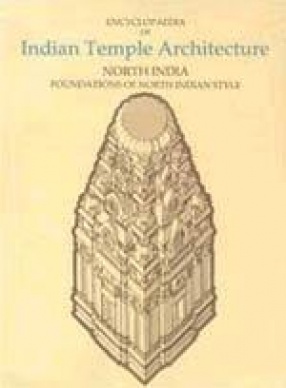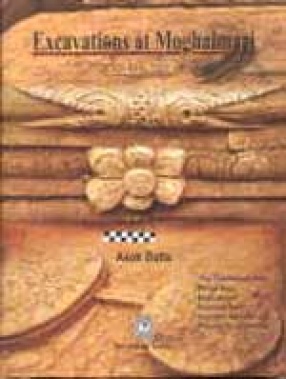This book narrates the fascinating story of the foundation and development of the architectural styles of north and south India, stretching from Kashmir to Kanyakumari and from coast to coast, highlighting their principal stages and substages. While both the regions share a common origin in thatched huts and modest timber forms, as reflected in early bas-relief depictions and their actual rock-cut representations, further evolution of the structural shrine in each region charters an independent course. The major south Indian styles of peninsular India have a lineal development from the Pallava prototypes. The monolithic Pallava Rathas (7th century A.D.) are concretised as structural vimanas which have their glorious flowering during the Chola supremacy. Thereafter under the succeeding Pandya, Vijayanagara and Nayaka regimes further elaboration is achieved by vertical and horizontal expansion, accompanied by progressive evolution of the pillar order and some other constituents. In the north there is a logical development from a flat-roofed cubical cella preceded by a pillared porch of the early Gupta period (4th-5th century A.D.) The simple structure gradually undergoes expansion, horizontal as well as vertical, in the following centuries. The horizontal expansion is achieved by the addition of mandapas of sorts while the vertical aspiration is met by experimenting with a variety of roof forms, of which rekha-sikhara was regared as most appropriate and adopted as a standared format and cognizance of the northern (Nagara) architecture. It is but natural that the form of the nagara sikhara, so widespread, would show regional variations, which is well illustrated when the 7th century sikharas of Gujarat, Madhya Pradesh and Orissa are compared inter se. Though conceptually alike, their treatment and further elaboration evince regional accents which become sharper as time advances. Regional variations are reflected not only in the sikhara profile but also in the varying structural proportions, sculptural programme of exterior and interior, and architectural designs of constituents like pillars, doorways, ceilings, etc. The book identifies and studies distinctive features of the principal architectural styles of the north and south against a background of their cultural and political development, the latter not inconsiderably conditioned by dynastic patronage. The book in two volumes of text and plates (with nearly 100 drawings and over 300 photographs) embodies the latest researches on temple architecture. It will be useful not only to the scholar and serious student but also to the lay reader.
Temples of India (In 2 Volumes)
by Krishna Deva
$130.50
$145.00
In stock
Free & Quick Delivery Worldwide
All orders amounting to US$ 50 or more qualify for Free Delivery Worldwide. For orders less than US$ 50, we offer Standard Delivery at $14 per book.
ABOUT THE AUTHOR Krishna Deva
Krishna Deva (1914-2001) after retirement as Director, Archaeological Survey of India was instrumental in bringing out several inventory volumes about sites and monument of India. He was the most eminent scholar of Indian art, achitectecture and archaeology. He conducted iconnograhphicaL and sculptural survey of the image in Nepal.He was Archaeological Advisor to his Majesty's Govt. in Nepal, Director Birla Academy of Art and Cultures, and for 12 years, as consultant to American Institute of Indian Studies, Varanasi for their project on Encyclopaedia of India Temple Achitecture. He was Editor of Journal of Indian Society of Oriental Art. His pioneering contribution in the Temples of India. He also wrote books on Images in Nepal. Report on vaishali Excavations and Temples of Khajuraho.
reviews
0 in total
Review by Anonymous
Be the first to review “Temples of India (In 2 Volumes)” Cancel reply
You must be logged in to post a review.
Bibliographic information
Title
Temples of India (In 2 Volumes)
Author
Edition
Reprint
Publisher
ISBN
8173050546
Length
xxii+286p., Figures; Plates; References; Glossary; Bibliography; Index; 29 cm
Subjects
more by Krishna Deva see more
similar bookssee more
Excavations at Moghalmari: First Interim Report (2003-04 to 2007-08)
Buddhist Monastic ...
$70.20
$78.00
New Delhi Down the Decades: A Behind-the-Lens View of the City
Ever wondered how New Delhi ...
$40.50
$45.00








There are no reviews yet.